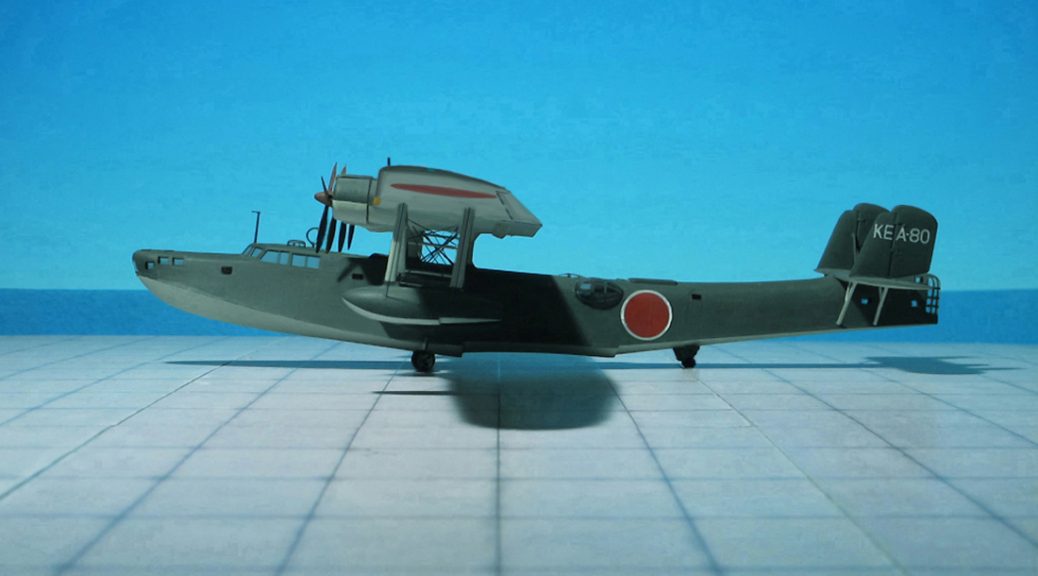TYPE: Long-range Maritime Reconnaissance and Bomber Flying Boat
ACCOMMODATION: Crew of nine
POWER PLANT: Four Mitsubishi “Kinsei 46” radial engines, rated at 930 hp each
PERFORMANCE: 211 mph at 19,685 ft
COMMENT: The Kawanishi H6K4 was an Imperial Japanese Navy flying boat used during WW II for maritime patrol duties. The IJ Navy designation was “Type 97 Large Flying Boat”, The Allied reporting name for the type was “Mavis”.
The aircraft was designed in response to a Navy requirement of 1934 for a long range flying boat and incorporated knowledge gleaned by a Kawanishi team that visited the Short Brothers factory in the UK, at that time one of the world’s leading producers of flying boats, and from building the Kawanishi H3K, a license-built, enlarged version of the Short “Rangoon”. The Type S, as Kawanishi called it, was a large, four-engine monoplane with twin tails, and a hull suspended beneath the parasol wing by a network of struts. Three prototypes were constructed, each one making gradual refinements to the machine’s handling both in the water and in the air, and finally fitting more powerful engines. The first of these flew on 14 July 1936 and was originally designated “Navy Type 97 Flying Boat”, later H6K. Eventually, 217 would be built.
H6Ks were deployed from 1938 onwards, first seeing service in the Sino-Japanese War and were in widespread use by the time the full-scale Pacific War erupted, in 1942. At that time of the war, four Kokutai (Air Groups) operated a total of 66 H6K4s.
The type had some success over South East Asia and the South Pacific. H6Ks had excellent endurance, being able to undertake 24-hour patrols, and were often used for long-range reconnaissance and bombing missions. From bases in the Dutch East Indies, they were able to undertake missions over a large portion of Australia. However, the H6K became vulnerable to a newer generation of heavier armed and faster fighters. It continued in service throughout the war, in areas where the risk of interception was low. In front-line service, it was replaced by the Kawanishi H8K “Type 2 Large-sized Flying Boat“, Allied code name “Emily” (Ref.: 24).












